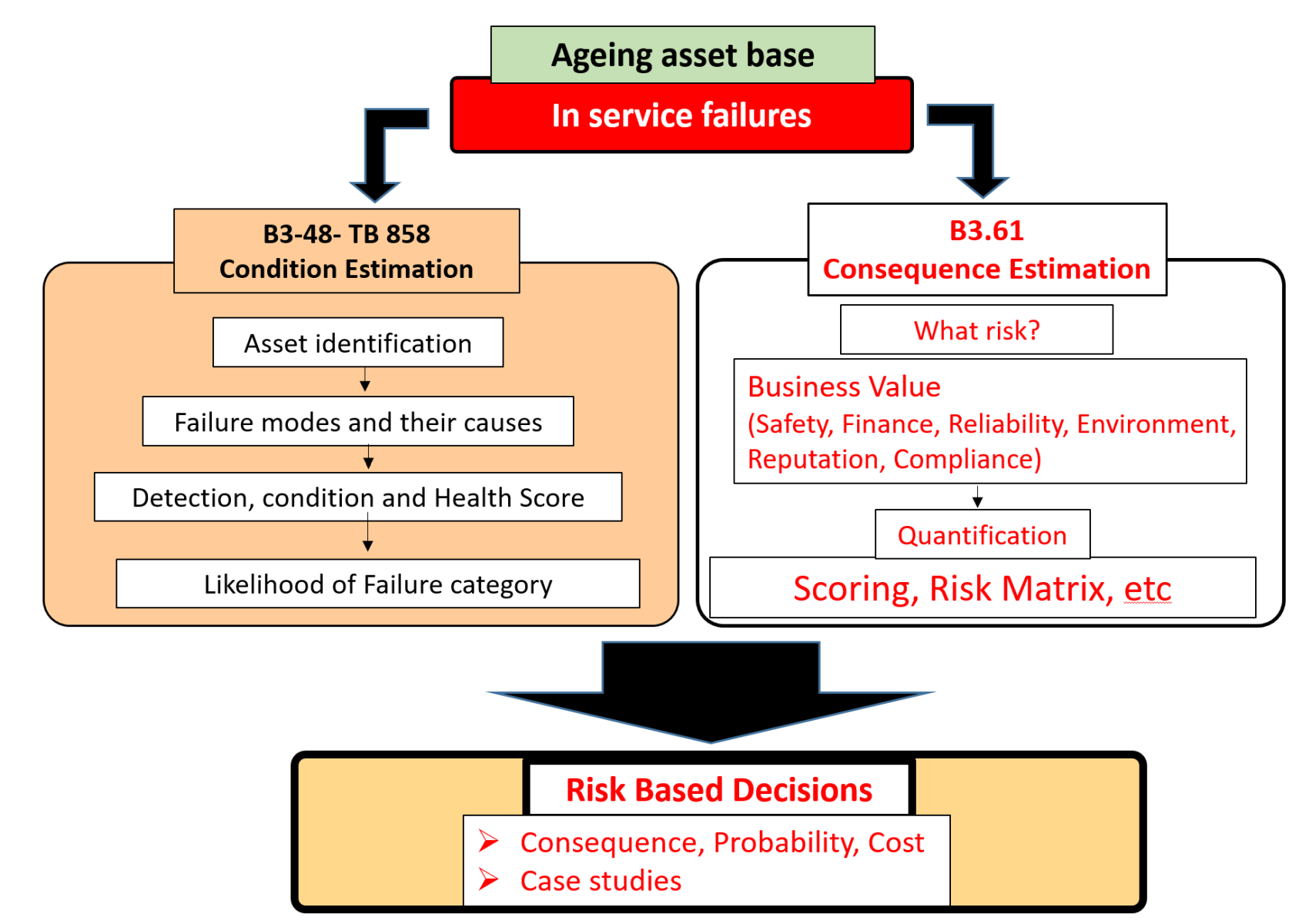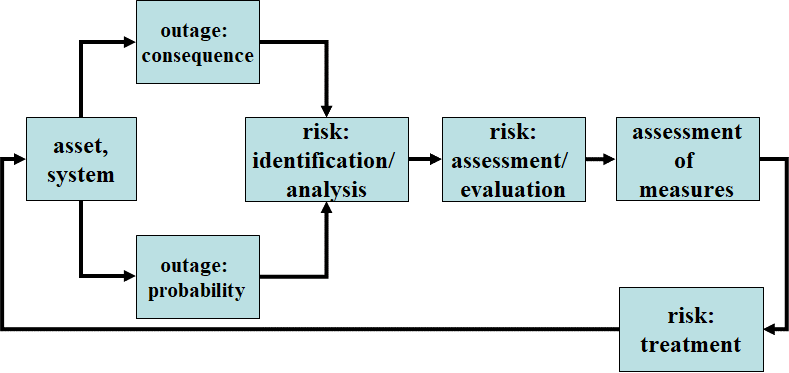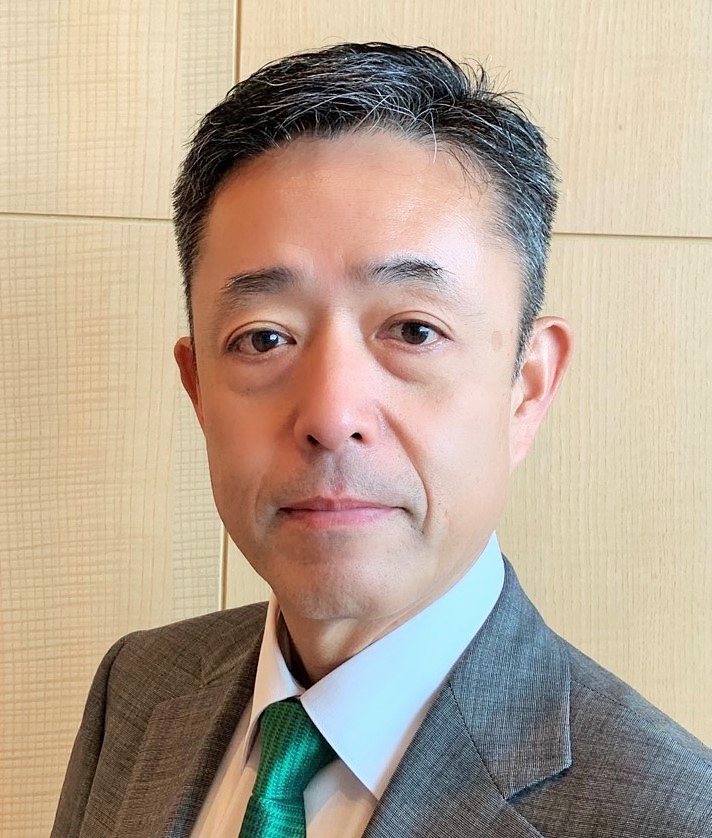Risk and asset health-based decision making in existing substations

Background
The transmission and distribution networks have been in service for many decades. The asset owners must keep maintaining all aged assets in their substations, but they are restricted, as they cannot commit unlimited finance and resources on maintenance or asset replacement. They have to optimise their efforts and focus their approach on the most critical issues.
One method of this optimisation is called Risk Based Maintenance. With this approach, the likelihood and the consequence of the asset in-service failure is combined into a risk index. The asset maintenance is then prioritised based on those findings. Assets that are in good condition and with a low consequence of failure do not require the same attention as the assets with a critical condition or assets whose failure would have a significant impact.
Risk of failure of an asset = likelihood of failure of the asset x consequences of its failure
Working Group (WG) B3.61 “Risk and asset health-based decision making in existing substations” is a continuation of the work which began in April 2017 with WG B3.48 developing a common approach for creating Asset Health Indices (AHI) for the range of substation assets. The goal of these AHIs is to assess the likelihood of occurrence for each cause of failure. The work of WG B3.48 is now finished, with technical brochure 858 published in December 2021. The draft of the WG B3.61 TB is planned for the end of 2024 with publication at the start of 2025.
The mission of the WG B3.61 is to assess the severity of the failure’s consequences. Together these two aspects of risk can be combined into a risk factor and so they facilitate risk-based decisions as indicated in Figure 1.
Here the consequences of failure will be assessed in terms of the asset's role in the network, business impact, safety, environmental damage, etc. This creates a much more bespoke assessment for companies relative to their risk tolerance.

Figure 1 – Risk based decision making
The role of risk-based decisions within asset life planning
The aim is to describe a process that can be used to classify substation assets in terms of their changing risk level consequent to an in-service failure. The likelihood of failure is expressed as an Asset Health Index (AHI). Both it and a risk index are evolving evaluation changing throughout an asset’s lifetime being part of a life plan for the assets owned.
The first step is deciding which assets need to be assessed. Firstly, the most immediate priority is to identify and manage the possibilities of in-service failures. Later this can be part of the asset planning process. This will allocate assets into risk bands. Assets in each band have been assessed based upon condition, thereby justifying the reinvestment plan. For maintenance tasks, the bands relate to timescales before the onset of malfunction if corrective work is not undertaken.
Topics to be included in the Technical Brochure
Reviewing risk in existing substations
The working group will identify and document the best practice found around risk-based decisions, risk modelling methodologies and will discuss internal and external factors influencing the risk decision process. The group would review existing CIGRE activities, documents and other literature that relate to risk-based decisions for primary substation assets.
Assessing a common risk methodology for the substation assets
We will cover both general risks applicable to all types of assets as well as risks and decisions involved with specific switchgear types (e.g. transformers, circuit breakers). Aggregation of individual items into higher-level structures – bay, circuit or a substation – will be discussed as well.
In general, three different areas of risk can be distinguished:
- Risk for the investor: Return on investment.
- Risk for the project: The plant's ability to deliver the desired project in time and within the budget.
- Risk for the system: Performance of the entire system, in particular the availability and reliability of the network.
The goal of a risk assessment is to find the optimal solution under several aspects. However, compromises are required. The following aspects should be considered in this context:
- System: Influence on the quality of supply
- Equipment: Technical condition of the equipment in terms of regulations and legal requirements
- Finance: Life cycle, initial investment, repair and replacement or revenue losses
- Environment: Impact on the environmental
- Social: Public safety, public opinion, and acceptance
Generic decision-making - Recommended method for risk calculation
Here we will discuss the proposed methodology of ranking the switchgear into risk categories. We will consider how to include the AHI in this process and how the final decision on the asset should be managed. The important part will cover the validation of the decision-making process, further learning on the outcomes and necessary continued improvement process.

Figure 2 – Workflow of the risk assessment process
Consideration will be taken on how to integrate the consequences of in-service failures associated with a condition-based assessment of each asset. This will involve looking at other information, such as business interruption costs, network criticality, performance, utilization, obsolescence, failure impact on safety, environmental impact, etc. by performing:
- Prioritization of risk mitigation interventions.
- Determine the impact on risk.
- Options analysis on risk, including doing nothing.
- Using case studies including dynamic data.
Examples, case studies and experience of WG members
We will include examples, case studies and experiences of the WG members with the risk-based decision-making process in substation asset management across the world. In addition, we will attempt to cover the most relevant publications on this subject with comments on the existing practices.
B3 Tutorial at Paris Session 2022
Tutorial for the Study Committee B3 will be held at the Paris Session 2022 on 31 August at 14:00 and it will cover the work of the WG B3.48 “Asset health indices for equipment in existing substations”. It will be presented by the convenor of this WG.
This tutorial, based on the TB 858, will discuss the different strategies used to define and measure the Asset Health Index (AHI). The main part of the tutorial covers the proposed eight steps of the generic AHI methodology applicable for all significant asset types. We will also cover the topic of combining individual AHIs into bigger groups like a bay or the whole substation.

